Demystifying Xylazine: A Q&A With Jonathan Cohen MMSc, MBA, PA

The veterinary drug xylazine has been increasingly detected in overdose deaths and combined with drugs such as fentanyl, cocaine, heroin and other drugs. The presence of xylazine within the heroin supply was detected in Puerto Rico in the early 2000s. In recent years, the Kensington section of Philadelphia has become the xylazine epicenter with growing percentages of the drug being incorporated within the illicit drug supply in Maryland along with Delaware, New Jersey, New York and Connecticut. To date, xylazine has been detected in most US states, partly due to increased presence but also with more heightened detection efforts & awareness.
In this Q&A, Jonathan Cohen, MMSc, MBA, PA answers frequently asked questions about xylazine and its troubling side effects, such as open wounds. Fortunately, in many cases, these wounds can be treated, and individuals who have been using xylazine can safely detox and recover with proper treatment.
A Baltimore-based physician assistant with experience in emergency medicine, plastic & reconstructive surgery and addiction medicine, Jonathan has been working closely with Pyramid Healthcare’s Harford County Detox & Residential Treatment Center to care for clients who come to treatment with open wounds.
Is xylazine a controlled substance?
Xylazine is a veterinary medication that was deemed unsafe for human use in the 1960s. The DEA does not currently schedule the drug as a controlled substance. This means that there are no laws against selling or buying xylazine at this time and it currently remains available for purchase via non-veterinary sources on the internet. Efforts on both state and federal levels are currently underway to address the need for regulation, while also maintaining access to xylazine for the veterinary community.
In April 2023, the Biden-Harris administration’s office of National Drug Control policy designated xylazine as an emerging public health threat in the U.S. and numerous research studies evaluating the effects of xylazine on humans are underway. Current management of xylazine care is largely informed by the experience of Philadelphia area hospitals, researchers, public health departments, wound care teams and harm reduction groups.
What are the medical purposes of xylazine?
Xylazine is a central nervous system depressant used in veterinary care as a sedative, muscle relaxant and analgesic. Although this medication is not safe for human use, due to its muscle relaxant, anti-anxiety and sedative properties, xylazine has been increasingly found in the illicit drug supply, partially due to the ease of access and also for the perceived prolongation of the opioid effects. Notably, most people who use drugs do not wish to use xylazine.
What does xylazine do to humans?
In humans, xylazine lowers blood pressure, heart rate and breathing rate. The mixture of xylazine and fentanyl is associated with an increased risk of overdose events and death. Although naloxone, or Narcan, can be used to reverse opioid overdose, there are currently no readily available medications to reverse an overdose of xylazine. The standard of care is to always administer naloxone for suspected opioid overdoses, re-dose as indicated, call 911, maintain an open airway while providing rescue breathing and perform CPR as necessary.
Why/How does xylazine cause wounds?
Based on the evidence that’s currently available, it is believed that xylazine-associated wounds begin to form due to vasoconstriction, or constriction of the small blood vessels. Not everybody who is exposed to xylazine develops wounds. Still, when they do, they are treatable if they can be managed before the development of extensive damage to underlying structures or secondary infection. It is ideal to discontinue xylazine use because that’s what’s causing the wounds to form and worsen. If we can keep individuals engaged in substance use treatment, we can demonstrate to them that these wounds can and do get better.
What does xylazine look like?
Xylazine is distributed in liquid formulation, but may also be purchased online in powder form. The drug is then mixed with other drugs as a powder or pressed into pills. Like fentanyl, because xylazine easily blends into powdered substances, it is not obvious when illicit drugs have been adulterated with xylazine. Individuals who have used drugs containing xylazine may appear sleepy, as if they have been tranquilized, leading to the common term “tranq.”
How long does xylazine stay in your system?
Once an individual stops using xylazine, the drug is quickly eliminated from the body. Withdrawal from the drug can be very uncomfortable when not managed properly. The fear of discomfort is commonly associated with continued drug use and delay in entering treatment. During this process, people may experience heightened anxiety, sleeplessness and intensified general symptoms associated with opioid withdrawal. With an increasing understanding of xylazine withdrawal, we currently employ several medications, under medical supervision, to maintain comfort during the detox process.
How to test for xylazine?
Although it is possible to test for xylazine in the body, currently most toxicology screens typically do not test for this substance. In most cases, medical providers must rely on other factors that suggest an individual has come into contact with xylazine. In patients presenting with an overdose who have used xylazine, respiratory depression may persist after Narcan has been administered. Patients who have used xylazine may be excessively sleepy, and they may or may not have unmistakable open wounds.
For now, at least, in Maryland we can make assumptions about the extent to which patients have been exposed to Xylazine based on their geography. For instance, if they are coming to the Pyramid Harford facility from Cecil County, MD we can be fairly sure they’re using heroin that was sourced from Philadelphia and has been affected by xylazine.
As xylazine use becomes more prevalent, more robust drug checking, toxicology testing and public health data will be an essential component of managing patient care and providing patient education.
How does Pyramid Healthcare care for clients with open wounds?
Access to care is the first step in treating xylazine withdrawal and its associated wounds.
During the pre-admission process, clinical wound pictures and recent medical care are carefully reviewed. Assessment for possible infection, functional disability, chronic medical illness and behavioral health needs are considered. Upon admission, a daily wound care regimen is created in addition to an individualized detox plan. During both detox and residential phases of treatment, wound care is provided daily, with continued discussion about progress and support of treatment needs.
Most importantly, the foundation of our care is based on reassurance, support and shared decision-making. We understand that despite best efforts, fear of withdrawal is a significant barrier to remaining in treatment.
If you or someone you know has wounds, Pyramid Healthcare’s Detox & Residential Treatment Center in Harford County, MD can help. Our staff are familiar with wounds caused by xylazine use. They can coordinate with other healthcare professionals as needed to treat your wounds and give you the best possible chance at recovery.










